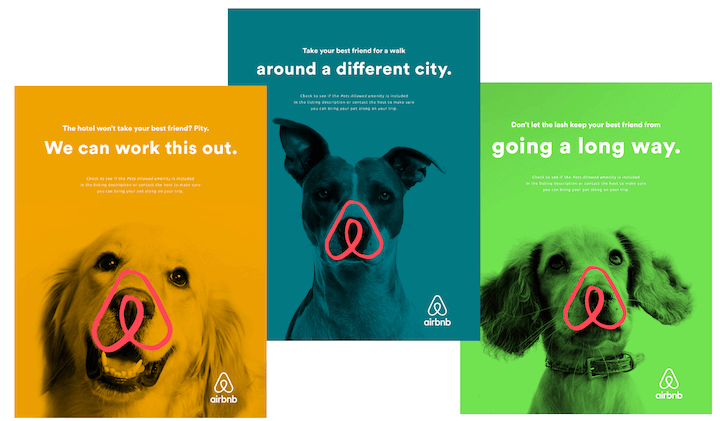The Steps to Find Your Target Audience and warm and hot audience
Understanding and effectively targeting your audience is an essential element of successful marketing. Whether you are using Facebook ads or other digital marketing strategies, identifying your target audience is crucial for maximizing conversion and reaching potential customers. In this article, we will discuss the various steps and strategies to find and engage with your target audience.

What is the Difference Between hot audience, Warm, and Cold Audience in Facebook Ads?
Hot, warm, and cold audiences are terms used to categorize different segments of potential customers based on their level of interaction and engagement with your product or service. Hot audiences are the most engaged and are familiar with your brand or offerings. Warm audiences have shown some interest but may not be fully convinced, while cold audiences are people who have never interacted with your advertisement or visited your website.
Identifying and understanding the characteristics of hot, warm, and cold audiences is essential for effective audience targeting in Facebook ads. By segmenting these audiences, marketers can tailor their advertising campaigns to meet the specific needs and expectations of each group.
Utilizing hot, warm, and cold audiences in audience targeting strategies allows marketers to create personalized and compelling ad content that resonates with each segment, ultimately leading to improved conversion rates and ROI.
How to Create Custom Audiences for Effective Targeting
Custom audiences play a pivotal role in ad targeting as they allow marketers to reach people who have already interacted with their brand or have shown interest in their products or services. By defining custom audiences, marketers can target specific segments of warm and hot audience, increasing the likelihood of conversion.
One effective tool for expanding targeting options is Facebook Lookalike Audiences, which enables marketers to reach new people who are likely to be interested in their offerings based on the characteristics of their existing audience. Implementing digital marketing strategies for custom audience engagement involves creating personalized and engaging content to nurture relationships with potential and existing customers.
By utilizing custom audiences and lookalike audiences, marketers can enhance their targeting capabilities and improve the efficiency of their advertising campaigns, ultimately driving better results and ROI.
Utilizing Marketing Tools to Identify Potential Customers
Exploring demographics and visitor data is a valuable way to find potential customers and tailor marketing efforts to meet their needs. Marketers can maximize the use of Facebook Pixel to track and target potential customers, gaining insights into their behavior and interaction with the brand.
Analyzing the return on investment for marketing campaigns targeting potential customers is crucial for understanding the effectiveness of the strategies employed. By evaluating the performance of ad campaigns and the acquisition of new prospects, marketers can optimize their targeting and budget allocation for better results.
Engaging and Interacting with Your Target Audiences
Implementing effective marketing campaigns to interact with target audiences involves creating compelling and relevant content that resonates with the specific needs and interests of the audience segments. Developing newsletter and browser-based strategies allows marketers to engage audiences through targeted and personalized communication.
Measuring ROI and optimizing advertising campaigns targeting specific audiences is essential for enhancing the effectiveness of marketing efforts. By tracking the performance of ad campaigns and refining targeting parameters, marketers can improve their reach and engagement with the ideal audience.
What is a target audience?
A target audience is the specific group of people that you want to reach with your marketing. That means your marketing collateral—from your email copy to your tagline to your brand story—should appeal to this group of people.
Here’s a great example of a targeted marketing campaign, including the video and the messaging, from AirBnB.
The voice in the video is young and impassioned. The imagery isn’t highly produced. Instead, it looks almost like a great iPhone video taken in the moment. This is clearly targeted to an audience of younger adults seeking authentic, spontaneous experiences when they’re traveling. And it works.
That’s why it’s so important to find your target audience. If you want your marketing to appeal to this group of people, you need to make sure you create everything with them in mind.
Target audience vs target market
We need a quick clarification of terms here: Your target audience isn’t your target market. Your target market is who your product or your service is intended for. Your target audience, on the other hand, is the specific group of people within your target market that your marketing is trying to reach.

So if, for example, your target market is small businesses, your target audience could be local service-based business owners, or marketing managers for small ecommerce retailers, or freelance marketing consultants. Or it could be all three.
Businesses often have more than one target audience within their target market.
Here are some more examples of target audiences:
- Assisted living facility
Target market: Senior citizens
Target audience #1: Seniors in the New England area
Target audience #2: Working adults with senior parents in the New England area - Moving company
Target market: People relocating
Target audience #1: Urban apartment dwellers
Target audience #2: Suburban families
3. PPC platform
Target market: Small businesses
Target audience #1: Local service-based business owners
Target audience #2: Marketing managers for small firms
And on an even deeper level, you’re going to have mini target audiences for every campaign you create. In fact, HubSpot found that most marketers create content for multiple audiences, with three target audiences being the most common.
Why do you need a target audience?
With those examples, you can see why knowing your target audience is so important. It’s the context you need in order to come up with content and messaging that resonates. The PPC software provider that serves small business target audiences is going to have an entirely different look and feel with its branding and marketing collateral than the PPC software provider that serves enterprise businesses.
And the ad a senior living facility creates for seniors themselves is going to be very different from the one it creates for adult caregivers of their senior parents.
Types of target audiences
Your business can have a bunch of different target audiences, since these will align with the focus of your marketing efforts and your goals. In some marketing campaigns, you might get super-specific. If you run a landscaping business, for example, that could mean focusing on all your customers in one town with one event or discount to improve your customer base in that one area.
When you’re working to identify your target audiences, though, you’ll want to focus on the types that align with the marketing channels you focus on regularly. Here are some examples:
Email: You might have a newsletter with tips that targets your general target audience, nurture email flows that target leads, and/or trigger emails aimed at current customers.
Event: You might host an event for an entire community, like in the landscaping company example above, or instead one that caters to potential customers. You could even throw an event for current customers or prospective partners.
Community: You might run a slack or Discord group that connects prospective customers in similar roles, or a similar community that connects customers using your product.
Ad: You could run Facebook Ads encouraging return customers, Google Ads targeted at prospects searching for a solution, or Instagram shopping ads targeting your competitor’s customers.
Social media: You might share a thought leadership piece aimed at influencers who would share it, a how-to video for your potential customers, or you could host a series of interviews with figures notable for your audience—whether those are authors, celebrities, or experts.
How to find your target audience
If you’re not incredibly clear on who your target audience is—for your branding in general, for a specific marketing channel, or for a certain campaign—you need to take a step back to identify it. You can determine who your target audience is by looking at who is engaging with your product, your brand, and your marketing. Here’s how:
Interview your customers
Audit your social following
Review your marketing performance metrics
Take notes on your competition
Define who your target isn’t
Here is an infographic that lays out the above steps, courtesy of Venngage:
Creating your target audience profile
After you’ve aggregated all the data about your followers, all the anecdotal information about your customers, and all the details from your competition, the final step is to put it together in a target audience profile.
Here’s some information to include:
- Location
- Age
- Gender identification
- Job title
- Industry
- Education level
- Household income
- Interests
- Hobbies
- Platform usage
Your target audience profile will include specifics that are relevant to your brand, too. Here are some examples of target audience profiles:
- First-time urban dog owner
- College senior without a career plan
- Trained chef working outside the industry
And with this information, you’ll want to develop personas to share with your team. These are detailed, fictional characters that make up certain buyers within your target audience
Target audience examples
Let’s finish off with some examples of target audiences for brands we’re familiar with, to help you firm up your understanding on this concept.
Wild One
Let’s say your product is dog gear—harnesses, bowls, leashes, toys. Your target market in this case is people with dogs. In order to reach your target market, you might have user-generated content in your social ads featuring happy customers, a newsletter with top dog stories of the week, a blog on pet care, and whitepapers for first-time pet owners. Your branding is sleek, modern, and minimal. Your target audience for this marketing campaign isn’t just pet owners; it’s young Millennials or Gen Zers who have their first dog.

Airbnb
Clearly, the target audience for this campaign is adventurous dog lovers.

Would these ads have the same impact on dog lovers if they had a photo of a smiling person with a suitcase and then a bullet point that stated there are dog-friendly hosts? Nope.
But Airbnb also runs campaigns that target young couples, single professionals, seniors, and more.
Nike target audience
When looking at Nike vs Under Armour, we can see that while the target market for both brands is people who wear sport and athleisure wear, there are several key differences in their target audiences. Nike is a higher-end brand whose marketing targets influential individuals in society and people up to 55 years old. Under Armour, on the other hand, is not for high-end earners, has a mostly male audience, and targets the 18-25 Gen Z demographic.

Starbucks target audience
Let’s compare Starbucks vs Dunkin. Starbucks’ target audience is mainly college students and professionals with higher income. With its in-store merchandise, healthy snacks, comfy couches, and free WiFi, it targets people who want to sip their coffee while working, conversing with someone, or enjoying some alone time (and saving the planet).

Dunkin, on the other hand, has minimal in-store experience and lower price points, targeting people on the go (America runs on Dunkin, after all) and with lower budgets. It’s also prevalent in the eastern half of the U.S.
Define your target audience—and use it

Having a clear picture of your target audience is key, but it’s not the final step. In order to make your marketing more effective, you need to make sure everyone on your team has these profiles in mind. So once you’ve got this definition, share it widely so that everything your business puts out there can cater to who matters most.



